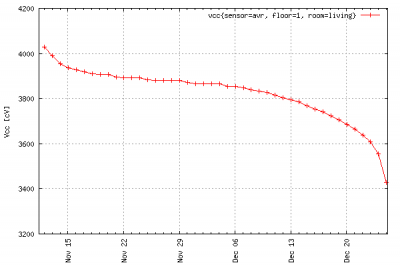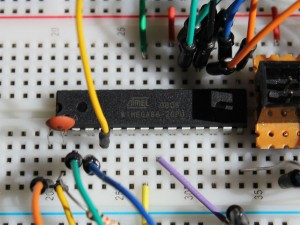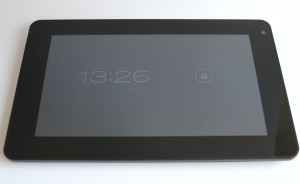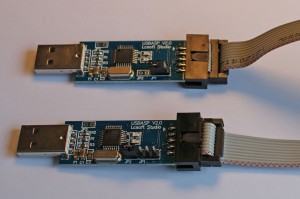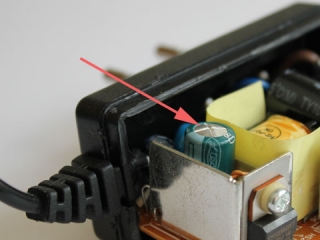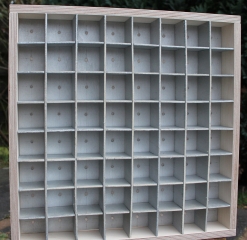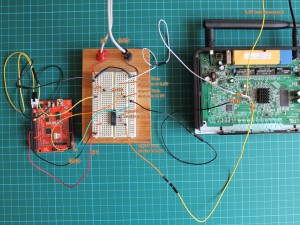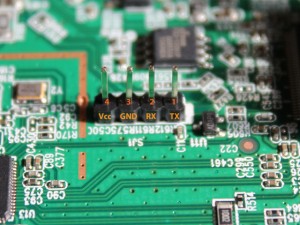With all components finally having arrived from China, I built the first couple of wireless sensors a few months ago. They are using the cheap nRF24L01 transceiver modules for data transmission based on the RF24Network network layer. I’m using a Raspberry Pi with the transceiver module directly connected to its GPIO pins as the root node. The sensor nodes are controlled by an ATmega328 microcrontroller flashed with the Arduino firmware for convenience.
Each sensor node currently features a DHT11 humidity sensor, a DS18B20 digital thermometer, a BMP180 barometric pressures sensor and it’s powered by three AA cells. The controller spends most of its time in power-saving sleep mode, waking up to send a data packet about every minute. Each packet contains the readings from the three sensors as well as the battery voltage as determined against the bandgap reference.
The setup is far from final. For one, I’m still not sure how to store the data. Currently, it is just logged into a text file with an occasional and experimental import into OpenTSDB. I haven’t really come to trust OpenTSDB since I haven’t found a suitable and convincing way to backup the HBase data, yet. Also, I might still replace the Raspberry Pi root node with an Arduino based MQTT relay.
First though, the power consumption of the sensor nodes needs improving. When I started out I was hoping for each node to run for close to a year on a single set of batteries. As you can see in the graph above, with the current design a set of three NiMH batteries with low self discharge lasts for no more than 6 weeks. What comes to mind in order to improve this, is to switch off the sensors and the transceiver in between samples. That is probably what I’ll try next. Please let me know if you’ve got any other ideas!

